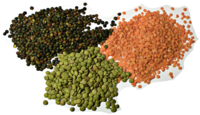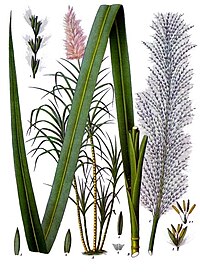
Potential Risk of Residues From Neonicotinoid‐Treated Sugar Beet Flowering Weeds to Honey Bees (Apis mellifera L.)
Sign Up to like & getrecommendations! Published in 2023 at "Environmental Toxicology and Chemistry"
DOI: 10.1002/etc.5602
Abstract: In 2018 the European Union (EU) banned the three neonicotinoid insecticides imidacloprid, clothianidin (CLO), and thiamethoxam (TMX), but they can still be used if an EU Member State issues an emergency approval. Such an approval… read more here.
Keywords: toxicology; beet; honey; sugar beet ... See more keywords

Comparative characterization of sugar beet fibers to sugar beet pectin and octenyl succinic anhydride modified maltodextrin in aqueous solutions using viscometry, conductometry, tensiometry and component analysis.
Sign Up to like & getrecommendations! Published in 2022 at "Journal of the science of food and agriculture"
DOI: 10.1002/jsfa.12137
Abstract: BACKGROUND Knowledge about specific functional characteristics, such as viscosimetric, conductometric, tensiometric and structural properties of polysaccharide aqueous solutions is highly important in the successful and adequate application in food emulsion formulation. First time detailed characterization… read more here.
Keywords: beet pectin; aqueous solutions; beet; sugar beet ... See more keywords

Effect of sugar beet fiber and different hydrocolloids on rheological properties and quality of gluten-free muffins.
Sign Up to like & getrecommendations! Published in 2022 at "Journal of the science of food and agriculture"
DOI: 10.1002/jsfa.12234
Abstract: BACKGROUND Extraction of pectin from sugar beet pulp is a side production line to recover value-added byproducts in a sugar refining company. The influence of depectinized and non-treated fiber on the quality of food was… read more here.
Keywords: sugar beet; free muffins; beet fiber; gluten free ... See more keywords

Comparison of the functional properties of RuBisCO protein isolate extracted from sugar beet leaves with commercial whey protein and soy protein isolates.
Sign Up to like & getrecommendations! Published in 2019 at "Journal of the science of food and agriculture"
DOI: 10.1002/jsfa.9335
Abstract: BACKGROUND RuBisCO was extracted from sugar beet leaves using soft and food-compatible technologies. Proximate composition, solubility, emulsifying, foaming and gelling properties of the protein isolate were determined. All these properties were systematically benchmarked against commercial… read more here.
Keywords: protein; sugar beet; soy protein; whey ... See more keywords

Impacts of projected precipitation changes on sugar beet yield in Eastern England
Sign Up to like & getrecommendations! Published in 2017 at "Meteorological Applications"
DOI: 10.1002/met.1604
Abstract: Citing this paper Please note that where the full-text provided on King's Research Portal is the Author Accepted Manuscript or Post-Print version this may differ from the final Published version. If citing, it is advised… read more here.
Keywords: precipitation changes; impacts projected; version; sugar beet ... See more keywords

A new method to validate and compare varietal resistance and yield tolerance of sugar beet (Beta vulgaris) against the beet cyst nematode, Heterodera schachtii Schmidt
Sign Up to like & getrecommendations! Published in 2022 at "Pest Management Science"
DOI: 10.1002/ps.6885
Abstract: Abstract BACKGROUND Beet cyst nematode, Heterodera schachtii Schmidt is a global threat to sugar beet crops, and is found in every major sugar beet growing region. Annual losses due to this nematode can be severe,… read more here.
Keywords: beet cyst; beet; sugar beet; yield ... See more keywords

Production of thermostable endo-1,5-α-l-arabinanase in Pichia pastoris for enzymatically releasing functional oligosaccharides from sugar beet pulp
Sign Up to like & getrecommendations! Published in 2019 at "Applied Microbiology and Biotechnology"
DOI: 10.1007/s00253-019-10238-x
Abstract: Sugar beet pulp is an agricultural processing residue that is a rich source of the cell wall polysaccharide arabinan. Functional oligosaccharides, specifically feruloylated arabino-oligosaccharides (FAOs), can be isolated from sugar beet pulp through selective action… read more here.
Keywords: beet pulp; sugar beet; endo arabinanase;

Characterization and Pathogenicity of Rhizoctonia Species Causing Root Rot and Damping-off on Sugar Beet in Turkey.
Sign Up to like & getrecommendations! Published in 2021 at "Current microbiology"
DOI: 10.1007/s00284-021-02470-4
Abstract: During 2015-2017 growing seasons, seventy-one isolates of Rhizoctonia spp. were obtained from the samples collected from the sugar beet fields of Konya province, which is one of the most important sugar beet growing areas of… read more here.
Keywords: sugar beet; beet turkey; rhizoctonia; pathogenicity ... See more keywords

Bioethanol production from raw sugar beet cossettes in horizontal rotating tubular bioreactor
Sign Up to like & getrecommendations! Published in 2017 at "Bioprocess and Biosystems Engineering"
DOI: 10.1007/s00449-017-1823-x
Abstract: Fossil fuels are still major energy sources, but the search for renewable energy sources has been encouraged. Bioethanol has been recognized as an alternative to fossil fuels and nowadays it represents more than 90% of… read more here.
Keywords: sugar beet; production; bioethanol production;

Diversity of Fusarium species associated with root rot of sugar beet in China
Sign Up to like & getrecommendations! Published in 2018 at "Journal of General Plant Pathology"
DOI: 10.1007/s10327-018-0792-5
Abstract: Sugar beet is widely grown throughout the world and represents the second largest crop used to produce sugar. Root rot in sugar beet, caused by Fusarium, significantly reduces yield, juice purity, and sugar concentration. Here,… read more here.
Keywords: sugar; sugar beet; fusarium; root rot ... See more keywords

A Binucleate Rhizoctonia anastomosis group (AG-W) is the causal agent of sugar beet seedling damping-off disease in China
Sign Up to like & getrecommendations! Published in 2019 at "European Journal of Plant Pathology"
DOI: 10.1007/s10658-019-01749-4
Abstract: Two binucleate Rhizoctonia (BNR) isolates (HLJ-21 and HLJ-57) were recovered from diseased sugar beet seedlings in Heilongjiang Province, Northeastern China in May, 2015. The two isolates were identified as members of the anastomosis group (AG)-W… read more here.
Keywords: sugar beet; damping disease; beet; china ... See more keywords